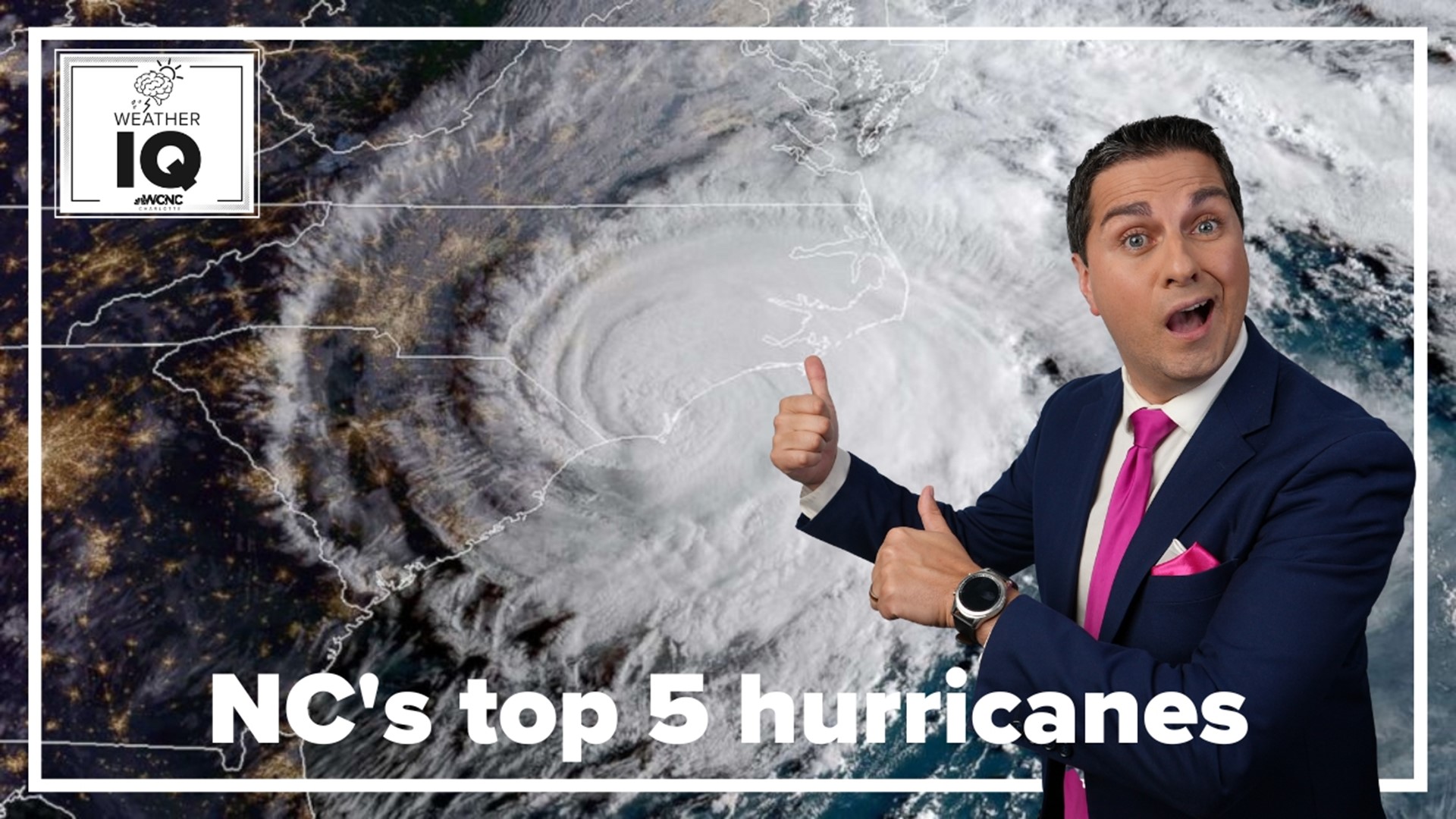CHARLOTTE, N.C. — Since the 1800s North Carolina has taken dozens of direct hits from hurricanes. Some of the storms have brought wind speeds as high as 150 mph.
We reached out to Corey Davis, N.C. State University's Assistant State Climatologist, to go back through over 150 years of data to find the strongest documented storms to date.
Here are the 5 strongest hurricanes (based on wind speed) in North Carolina history:
Number 5: Hurricane Fran - September 1996
Hurricane Fran is the only major hurricane to make landfall in North Carolina in the past 60 years. A major hurricane is any storm Category 3, with 111 mph winds, or greater.
The storm produced maximum sustained winds of 115 mph at landfall in Cape Fear. Wind gusts were even stronger.

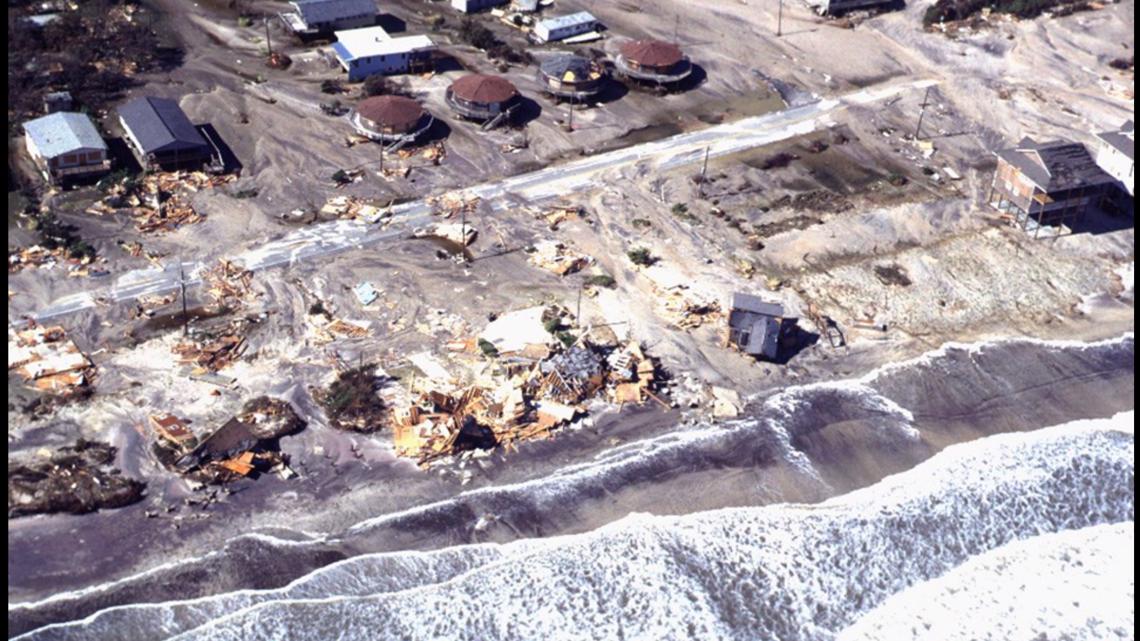
Fran produced a path of destruction from Wilmington to Raleigh. Thousands of trees fell and the total damage amounted to $4 billion (adjusted for inflation).
Number 4: Hurricane San Ciriaco - August 1899
The storm gets its name after hitting Puerto Rico during the Catholic festival of San Ciriaco. The hurricane made landfall days later on Ocracoke Island with estimated wind gusts ranging from 120 to 140 mph. This storm knocked out bridges on the outer banks and wrecked ships off the coast; adding to the legendary Graveyard of the Atlantic.


The Outer Banks were flooded, bridges were knocked out, and 20 to 25 people died in the state, including 14 fishermen whose boats capsized while returning to the mainland.


Number 3: The Great Beaufort Hurricane - August 1879
With today's modern technology, the Category 3 storm was able to sneak up on North Carolina's Crystal Coast. The eye of the storm made landfall in Beaufort, NC, where the governor was forced to take emergency refuge at the Atlantic Hotel. Wind gusts reached at least 138 mph at Cape Lookout before the anemometer was blown away.

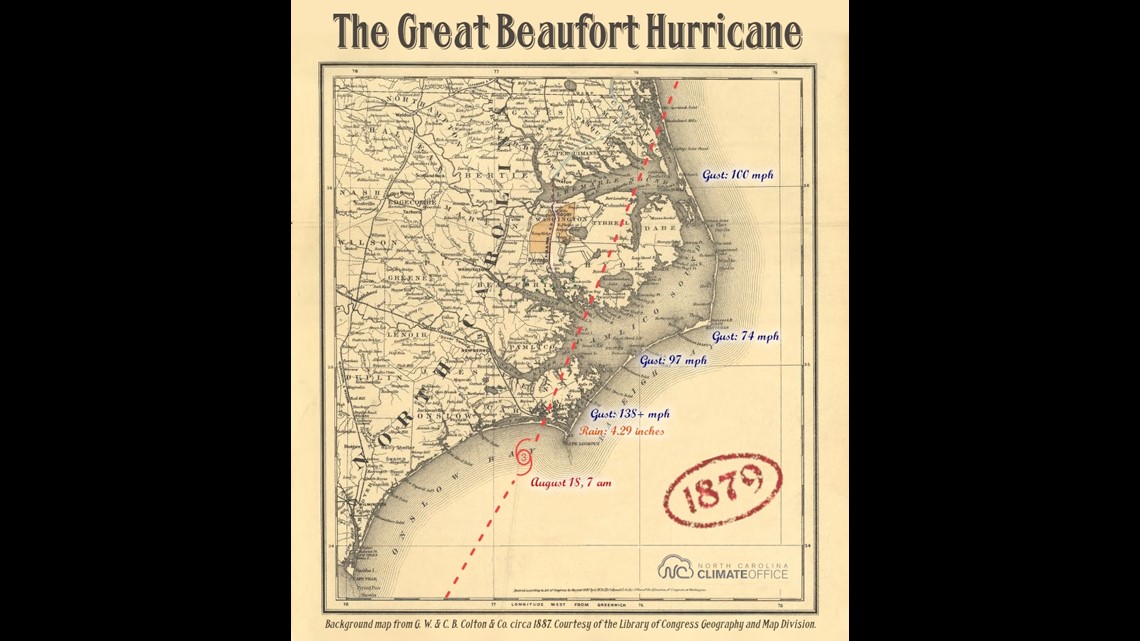
Number 2: Hurricane Helene – September 1958
Hurricane Helene could have been number one but the strongest winds, located inside the storm's eye, remained 20 miles offshore and missed most of the official weather observation equipment.

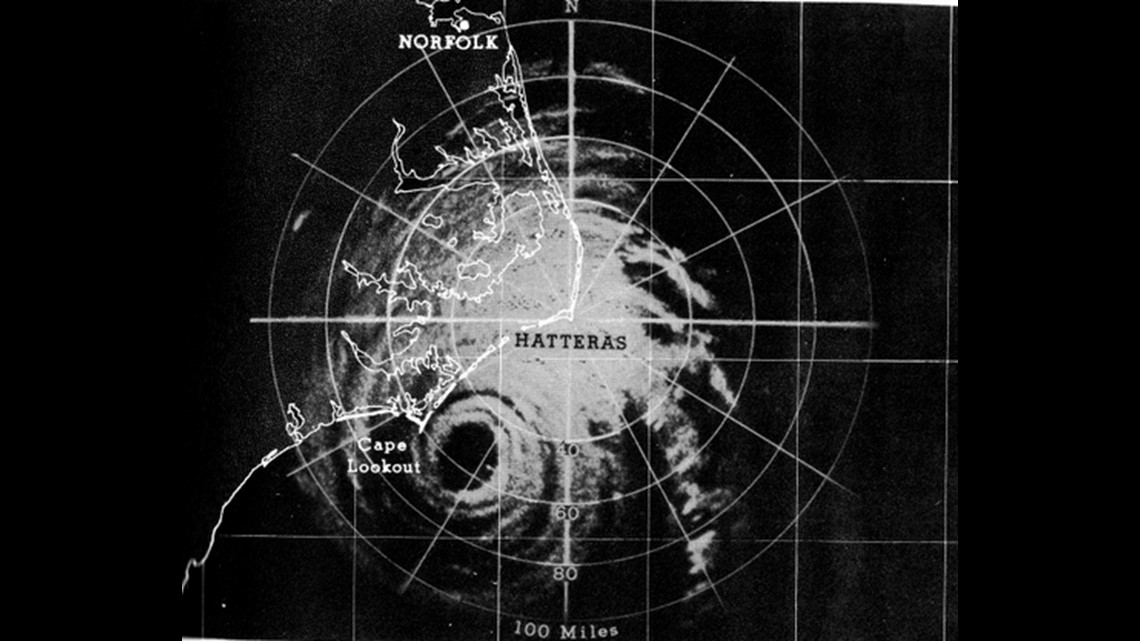
Even with the storm offshore, immediate coastal areas still felt the brunt of the storm. The National Weather Service office in Wilmington recorded a gust of 135 mph, and the Coast Guard station at Cape Lookout measured a 144-mph gust. Those winds toppled trees and damaged homes, but the extent of the damage could have been much worse had Helene's track shifted a few dozen miles to the west.
Number 1: Hurricane Hazel – October 1954
Hurricane Hazel is the strongest-known, landfalling hurricane in North Carolina history. The eye of Hazel eye came ashore near the North Carolina and South Carolina state line, where it created devastating damage. Wind gusts were estimated upwards of 150 mph and the U.S. Weather Bureau, the predecessor to the National Weather Service, reported that "all traces of civilization on that portion of the immediate waterfront between the state line and Cape Fear were practically annihilated."

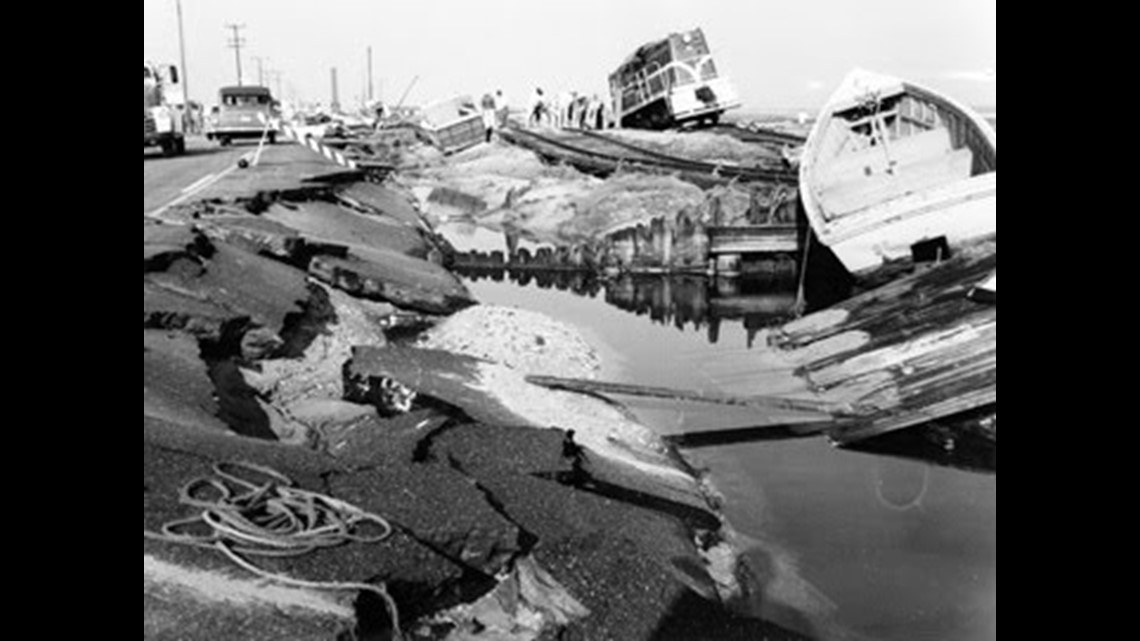
Hitting at the same time as the high tide, Hazel's storm surge was up to 18 feet high in Calabash.

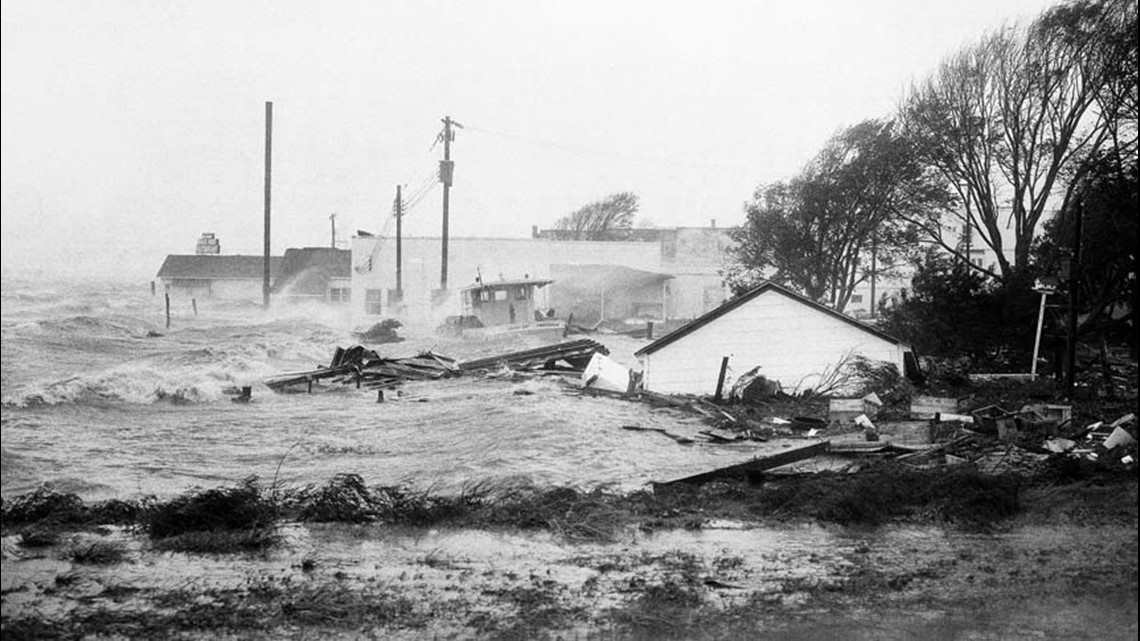
Hurricane-force wind gusts were recorded in Raleigh and Fayetteville, and an estimated one-third of all buildings east of Charlotte were damaged.
North Carolina has never had a category 5 hurricane make landfall, and let's hope it never does.

